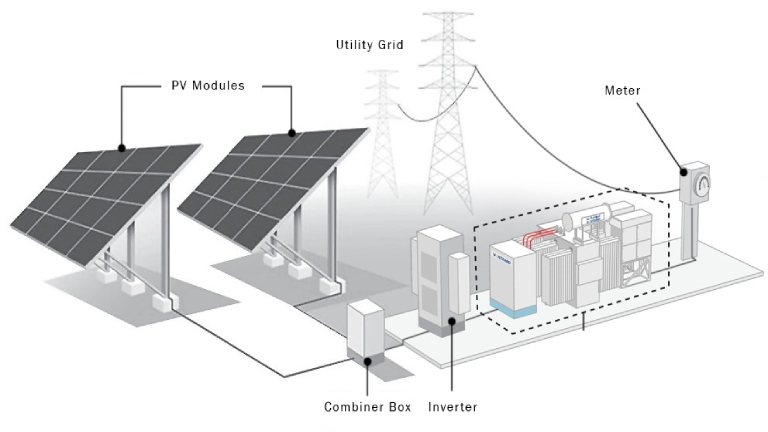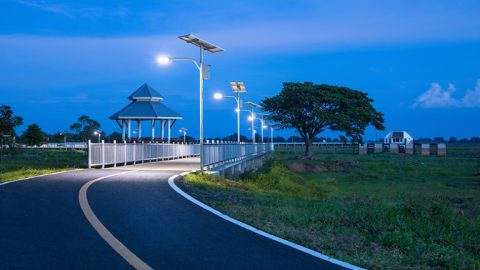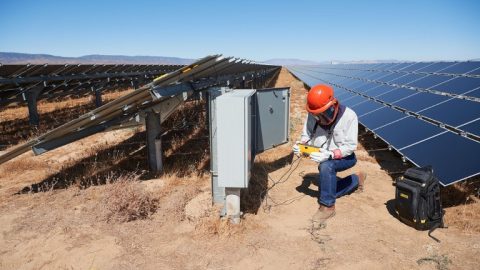What is an Inverter?
An inverter is a key component in solar power systems, converting the direct current (DC) energy generated by solar panels into alternating current (AC) electricity that can be used to power your home’s appliances and electronics. Without a properly functioning solar inverter, the energy produced by your solar panels cannot be utilized efficiently.
If the inverter fails, your home will no longer receive solar-generated electricity, which means you will be relying entirely on grid power, potentially leading to unexpectedly high utility bills.
What is an Inverter Transformer PM Checklist?
Solar power plants play a pivotal role in providing clean energy for a sustainable future. Harnessing the sun’s energy, these plants generate electricity for our homes and cities. Within this process, the solar inverter transformer holds significant importance, facilitating the conversion of electricity produced by solar panels into the everyday power we require.
Inverter transformer preventive maintenance (PM) checklists are indispensable tools for identifying and understanding potential issues before they escalate into costly and disruptive problems. This article will delve into the critical aspects of a 6-month PM checklist for solar inverter transformers in solar plants.
Steps for Solar Inverter Maintenance
- Monitor Performance: Regularly check the inverter’s LED screen for error or warning messages. This allows for early detection of issues and prompt action before they worsen.
- Clean Air Vents: Dust and debris can accumulate in the inverter’s cooling system, reducing efficiency and potentially leading to overheating. Cleaning the air vents ensures proper airflow and prevents damage.
- Inspect Connections: Loose or corroded connections can lead to inefficiencies or short circuits. Regularly inspect and tighten all connections between the solar panels and the inverter.
- Firmware Updates: Keeping the inverter’s firmware up to date ensures it operates at maximum efficiency and benefits from the latest optimizations and bug fixes.
- Environmental Protection: Ensure the inverter is protected from harsh weather conditions, such as extreme temperatures, humidity, or direct sunlight. Proper installation and housing can prolong the system’s life.
Significance of Inverter Transformers in Solar Power Plants?
The significance of inverter transformers in solar power plants lies in their pivotal role in converting the direct current (DC) generated by solar plants into the alternating current (AC) needed for everyday electricity use. These transformers are essential for optimizing energy efficiency and ensuring a reliable and consistent power supply from solar plants to homes and cities. Inverter transformers contribute significantly to the overall functionality and performance of solar power systems, making them a crucial component in the transition towards sustainable and clean energy solutions.
First, let’s discuss solar inverter transformers’ role in solar energy and plants. Solar panels generate DC electricity from sunlight, which must be transformed into AC electricity for distribution and use. Solar inverter transformers precisely perform this task, ensuring a constant and stable energy supply.
Moreover, they play a vital role in voltage regulation and fault protection, preventing potential disruptions and blackouts. Their inspection frequency usually depends upon the risk assessment, but here is a formula that can help know the exact time for routine inspections.

Inspection Frequency = Risk Assessment Score / Maximum Possible Score x 100
Importance of Inverter Transformers in US Solar Power Plants
In the rapidly growing US solar energy sector, maintaining the efficiency and longevity of both transformers and inverters is critical. A well-structured transformer maintenance checklist ensures the smooth operation of these key components, preventing breakdowns and maximizing energy output. Below is a detailed guide tailored to US solar power systems, focusing on inverter maintenance and preventive care.
Role of Preventive Maintenance
The solar inverter maintenance checklist plays a critical role in ensuring the efficiency, reliability, and longevity of inverter transformers in solar power plants. This checklist serves as a proactive tool for regular inspections, preventive maintenance, and early detection of potential issues. By systematically outlining essential tasks, it helps prevent costly downtime and disruptions in the solar energy generation process.
As shown in Figure 1. It involves a systematic and planned approach to inspections, tests, and maintenance tasks. Preventive maintenance checks can lead to increased lifespan, optimized performance, reduced stoppages, and equipment and personnel safety. Therefore, incorporating preventive maintenance into the inspection of critical equipment can lead to the smooth working of the power plants.

6-Month Preventive Maintenance Checklist
Since you know the importance of inverter transformers in solar power plants, it is essential to discuss the PM checklists. Preventive maintenance is vital to know the faults in your equipment that can lead to unforeseen conditions. This checklist is designed to cover critical aspects of transformer maintenance and ensure the reliable performance of these essential devices.
Safety Preparations for Transformer Inspection
- First, isolate the equipment from the concerned department (Electrical in this case)
- Get a duly signed work permit from the concerned department and maintenance activity manager.
- Ensure the equipment is completely isolated by starting it manually.
- Discharge the power terminals safely.
Preventive maintenance Checklist
- Check the Oil Temperature and Trip alarm by rotating the OTI (Oil Temperature Indicator) pointer. You can check the oil temperature difference using the formula mentioned below;
O.TDIFF = OTIFINAL – OTIINITIAL
- Calibration of the indicators and inspection of Oil pockets
- Top up if the oil level in pockets is low
- Check the Winding Temperature and Trip alarm by rotating the WTI (Winding Temperature Indicator) pointer. Similarly, you can check the winding temperature to know better about its performance.
W.TDIFF = WTIFINAL – WTIINITIAL
- Calibration of indicators and inspection of oil pockets
- Observe any accumulation of gases in the Buchholz Relay
- Inspect the Buchholz relay Alarm and Trip by draining oil from the relay by opening the vent valve
- Inspection of PRV (Pressure Relief Valve). PRV condition can be inspected using the formula;
PRV = PSET – PACT
Where,
PSET = Initial set pressure value
PACT = Actual recorded pressure value
- Check the alarm and tripping of the Main oil Gauge valve fixed on the conservator tank.
Integrating Solar Software for Solar Inverter Maintenance
Solar energy software and solar asset management software are essential in maintaining the health and performance of inverter transformers. These tools provide a comprehensive solution for monitoring, analyzing, and optimizing the performance of solar power systems.
Solar Software
- Real-time Monitoring: Solar software allows for real-time monitoring of inverter transformers, providing instant alerts for any anomalies.
- Data Analysis: Advanced data analytics help in understanding performance trends and predicting potential failures before they occur.
Solar Asset Management for solar Inverters
- Preventive Maintenance Scheduling: Solar asset management software schedules and tracks preventive maintenance tasks, ensuring that all necessary inspections and maintenance activities are performed on time.
- Comprehensive Reporting: Detailed reports generated by asset management software provide insights into the condition and performance of inverter transformers, facilitating informed decision-making.
- Risk Assessment: By analyzing historical data, solar asset management software helps in assessing the risk and determining the appropriate frequency for preventive maintenance.
Conclusion
In solar power plants, the inverter transformers play a crucial role by converting the electricity generated by solar panels into a usable form for daily needs. To keep these important components working smoothly and reliably, it’s important to take a proactive approach to maintenance. The 6-month Preventive Maintenance (PM) checklist provided here is a helpful guide to make sure that inverter transformers stay efficient and perform well. By conducting regular inspections and following the maintenance tasks outlined in the check sheet, solar power plants can harness the sun’s energy effectively.
By integrating solar energy software and solar asset management software into the maintenance strategy, solar power plants can enhance the efficiency, reliability, and longevity of their inverter transformers, thereby ensuring a steady and reliable power supply.
FAQs
Why is a transformer preventive maintenance checklist important?
Transformer preventive maintenance checklist ensures that all components of the transformer are regularly inspected, preventing breakdowns and extending the lifespan of the equipment.
What is included in a solar inverter maintenance checklist?
Solar inverter maintenance checklist includes tasks like inspecting electrical connections, cleaning air vents, checking for firmware updates, and monitoring inverter performance.
How often should I follow a transformer inspection checklist?
Transformer inspection checklist should be followed every six months to ensure optimal performance and to catch any potential issues early.
What happens if my solar inverter transformer fails?
If a solar inverter transformer fails, your home or business will stop receiving solar-generated power, leading to increased reliance on grid electricity and potentially higher utility bills.
How can data improve inverter maintenance?
Data collection helps to monitor trends and performance metrics, allowing technicians to use a transformer checklist to prevent issues before they cause system failures.


































